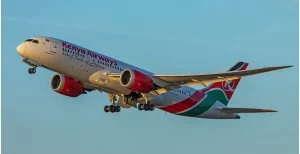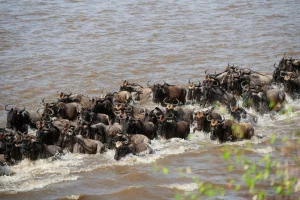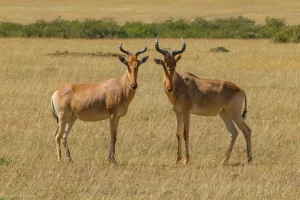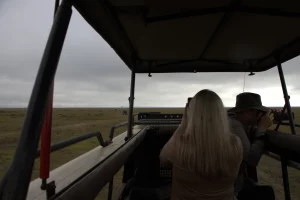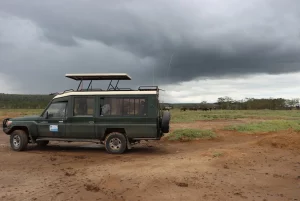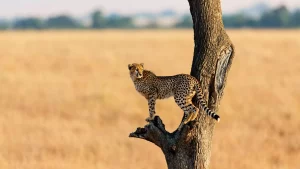Wildebeest Migration - The Ultimate Guide to 2024 Africa’s Great Migration
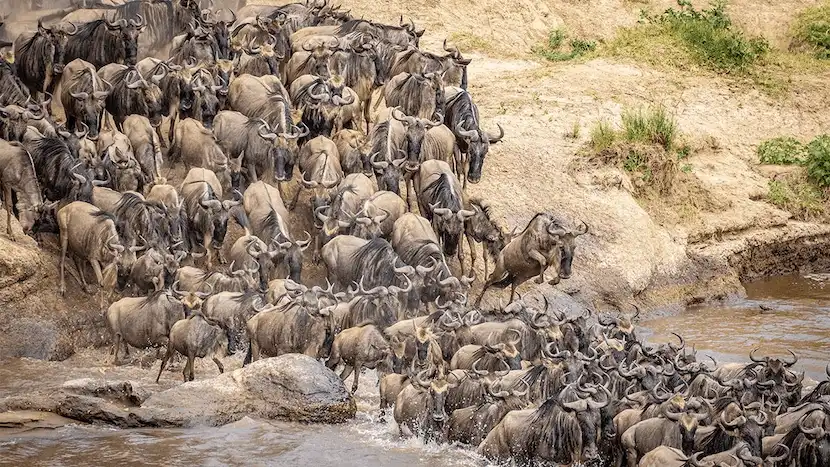
The Wildebeest Migration is without a doubt one of the most amazing spectacles on earth. Every year, over a million wildebeest and zebra, make their way from the Serengeti in Tanzania to the Masai Mara in Kenya, in an epic journey that covers over 1,500 miles. If you want to witness this incredible event, now is the time to plan your safari!
MasaiMaraSafari.in is your go-to source for all things Wildebeest Migration. We’ll tell you everything you need to know about this incredible phenomenon, from when and where it happens to the best time of year to visit. So if you’re ready to embark on an unforgettable adventure, read.
Ready to Plan the Great Migration Africa Safari? ENQUIRE NOW
Masai Mara migration safari providers in Kenya. We have experienced guides and quality equipment to ensure your safari is a safe and enjoyable experience. So what are you waiting for? Book your safari today by sending your inquiry
If you’re looking for an unforgettable African adventure, wildlife migration is a perfect choice. Contact us today to find out more about our custom itineraries and how we can help you make the most of your African adventure. We are available at james@ajkenyasafaris.com or safarioffers@ajkenyasafaris.com through email. You can also reach us through WhatsApp or phone at +254-748-258-880.
Featured Great Wildebeest Migration Itineraries & Other Packages
| The Best Nairobi to Masai Mara Packages | Detailed Itinerary | Price Per Person Sharing |
|---|---|---|
| 4-Day Masai Mara Migration Safari | View the Itinerary | From USD 1430 |
| 3-Day African Safari in Kenya Masai Mara | View the Itinerary | From USD 880 |
| 3-Day Masai Mara Budget Safari | View the Itinerary | From USD 880 |
| 4-Day Ashnil Mara Camp Safari | View the Itinerary | From USD 1190 |
| 4-Day Lake Nakuru & Masai Mara Safari | View the Itinerary | From USD 1180 |
| 4-Day Mara Serena Safari Lodge Trip | View the Itinerary | From USD 1262 |
| 4-Day Masai Mara Flying Safari | View the Itinerary | From USD 1450 |
| 4-Day Masai Mara Group Safari | View the Itinerary | From USD 750 |
| 5-Day Naivasha & Masai Mara Group Safari | View the Itinerary | From USD 854 |
| 6-Day Amboseli, L. Naivasha, & Masai Mara Safari | View the Itinerary | From USD 1764 |
| 6-Day Amboseli, L. Nakuru, & Masai Mara Group Safari | View the Itinerary | From USD 1186 |
| 6-Day Hell’s Gate, L. Nakuru, & Masai Mara Safari | View the Itinerary | From USD 1788 |
| 6-Day L. Nakuru, Hell’s Gate, & Masai Mara Group Safari | View the Itinerary | From USD 1123 |
| 6-Day Nairobi & Masai Mara Family Safari | View the Itinerary | Adult From USD 2000 Child From USD 628 |
| 6-Day Nairobi, L. Nakuru, & Masai Mara Safari | View the Itinerary | From USD 1795 |
| 7-Day Amboseli, Naivasha, & Masai Mara Group Safari | View the Itinerary | From USD 1130 |
| z13-Day Kenya Wildlife & Beach Safari | View the Itinerary | From USD 5258 |
What is the Great Migration? - The Greatest Show on Earth
The Animals Migration, also known as The Great Migration, is one of nature’s most spectacular displays. Each year, millions of wildebeests and zebras embark on a journey through the Serengeti-Masai Mara ecosystem in search of food and water.
During the dry season (typically from June to October), the wildlife moves north from the Serengeti National Park in Tanzania to Kenya’s Masai Mara National Reserve. The Wildebeests are closely followed by predators such as lions, hyenas, and cheetahs, making for dramatic scenes on the savannah.
As climate patterns change and resources shift, so too does the migration route, making each year unique and offering a new experience for safari-goers.
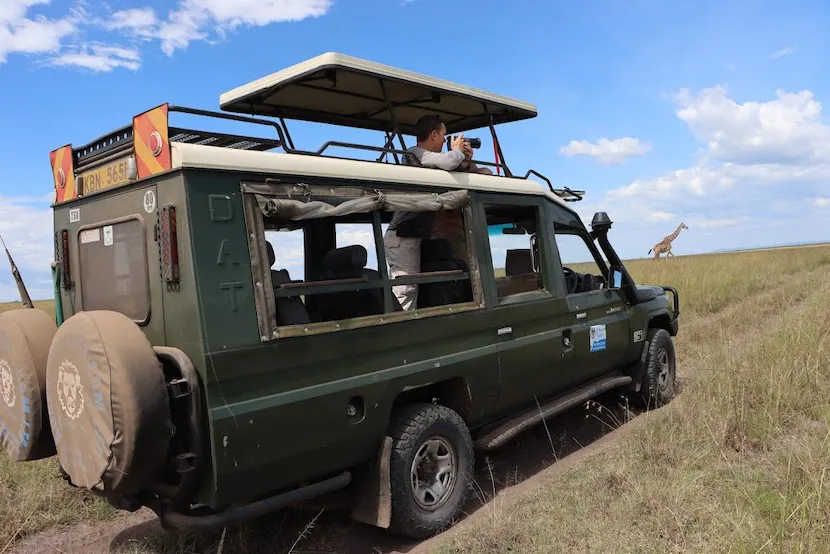
A Year-Long, 1,200-Mile Journey - How the Great Migration Africa Moves Throughout the Year
The herd moves throughout the year, as different parts of Serengeti and Masai Mara become favorable to the herds of wildebeest. Here is how the thousands of animals move around the Serengeti National Park and the Masai Mara National Reserve.
The Great Migration in January, February, and March
The Month of March
The Great Movement in April, May, and June
The Great Migration in July, August, September, and October
The Month of August
The Month of September and October
The Great Herd Movement in November and December
November and December see the wildebeest migration back in the southern Serengeti, where they will spend Christmas before starting their journey all over again in January.
Great Wildebeest Migration Safari: A Planning Video
More about the Great Wildebeest Migration - Key Moments
July- August: Dramatic River Crossings in the Masai Mara Game Reserve
One of the most treacherous obstacles of the wildebeest migration is the crossing of the Mara River. The river is home to large crocodiles that lie in wait for weary migrants. To reach the other side, the animals must swim through fast-moving currents and dodge sharp rocks.
Despite the risks, tens of thousands of wildebeest make the crossing every day during this season. For many, it is a journey of survival. But for others, it is simply a journey home.
Book Your Safari in July for River Crossing -
January - February: Calving Season in the Serengeti
Book Your Safari in Jan-Feb for Calving Season

Tips for Planning the Great Migration Africa Safari
- Plan to visit in the summer months of July through October, when the event is typically at its peak in the Maasai Mara region of Kenya.
- Make sure to book with a reputable safari company that has experienced guides and access to prime viewing locations.
- Keep an eye out for crossings of the Wildebeest and other herds over the Mara River, as these are particularly exciting to witness.
- Don’t forget to bring your camera for a once-in-a-lifetime chance to capture the action in all its glory.
- Consider adding on a hot air balloon ride for an aerial view of the herds on the move.
- Don’t forget to pack your binoculars to get a closer look at the predators and other animals in their natural habitat.
- Make sure to also take time to appreciate the smaller, but no less important, aspects of the ecosystem during your safaris such as bird watching.
- Keep in mind that the movement is a constantly changing event, so flexibility and a sense of adventure are key to making the most out of your safari experience.
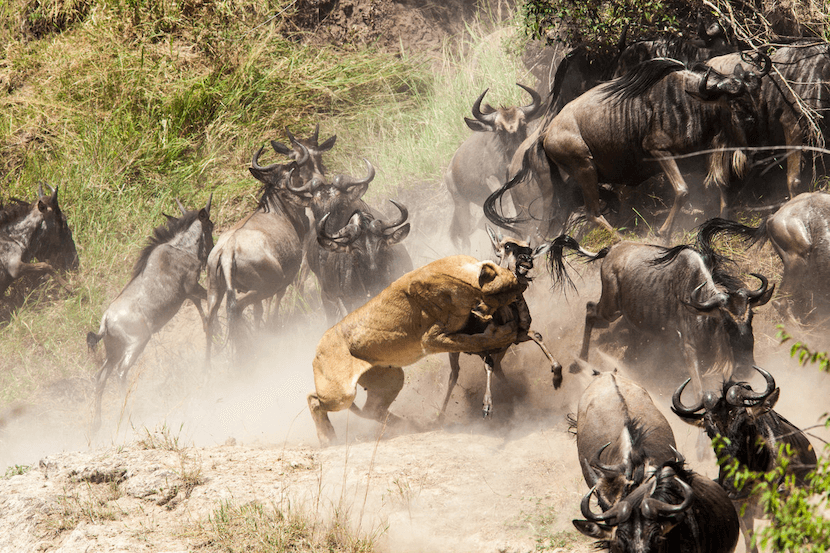
Frequently asked questions about the Great Migration Africa Tour
1.What is the Great Wildebeest Migration?
2.How Does the Great Wildebeest Migration Movement Work?
4.Why do Wildebeest migrate?
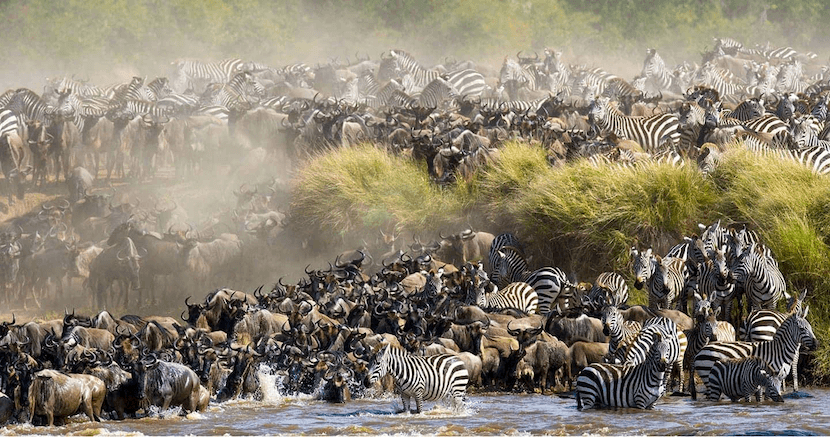
5.Where does the Wildebeest Migration start and end?
6.What is the best time to visit the Serengeti?
7.How many wildebeests are in a herd?
8.Are Wildebeest endangered?
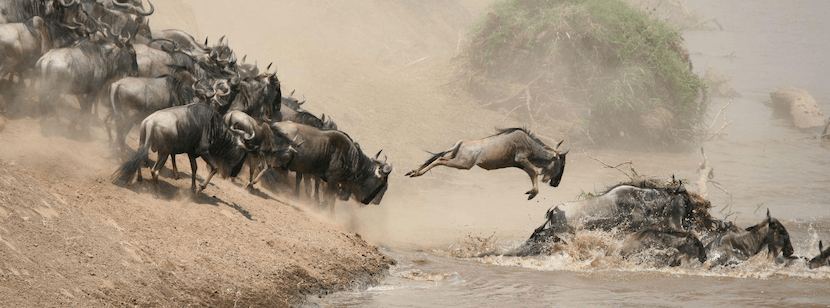
9. What other animals migrate with Wildebeest?
Other herbivores, such as zebra, gazelle, and antelope, often migrate alongside Wildebeest in their herds. Predators such as lions, hyenas, and cheetahs also follow the herd in search of their next meal. There is no certainty of knowing if the migration is going to contain different species of animals because they change every year.
10. Can the Migration River Crossings be Predicted?
While the event follows a general pattern, it is impossible to predict exactly when and where the herds will cross rivers. This adds to the excitement and adventure of going on a Masai Mara safari. The migration is quite unpredictable and we would recommend staying in the mara for about 3-night for a chance of witnessing the short, but action-filled, river crossing.
11. Where can I go on a Wildebeest Migration Safari?
12.Where are the Best Places to Stay on a Wildebeest Migration Safari?
13.What are the Best Migration Safari Tours?
14.Ready to Plan Your Migration Safari?
Witnessing the crossing of the Mara River with the best of the migration packages from MasaiMaraSafari.in. Contact us today to book your safari to see the great migration as the herd gets out of the Serengeti into the Maasai Mara National Reserve.

